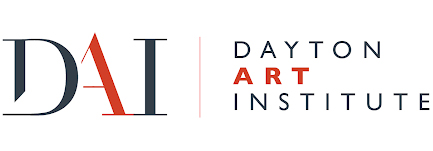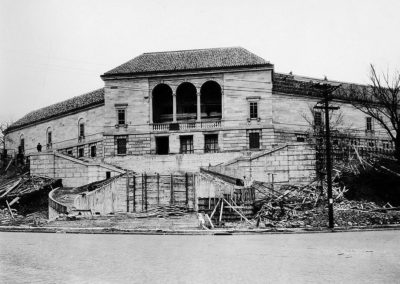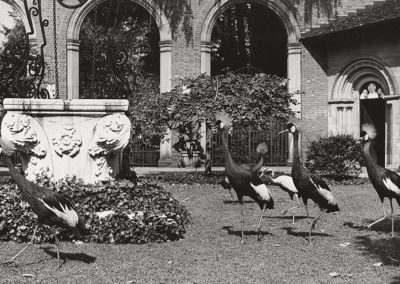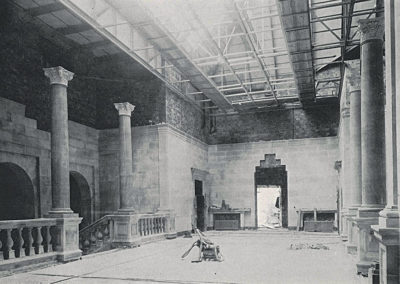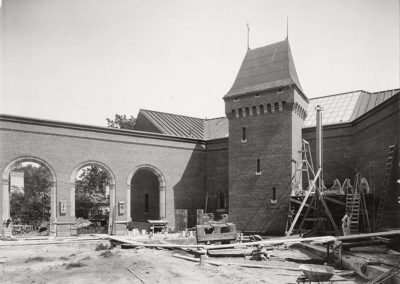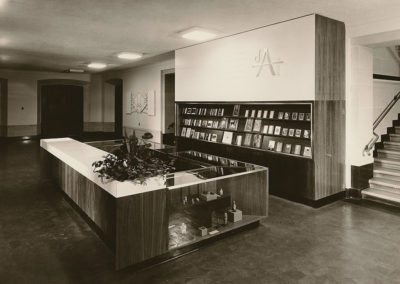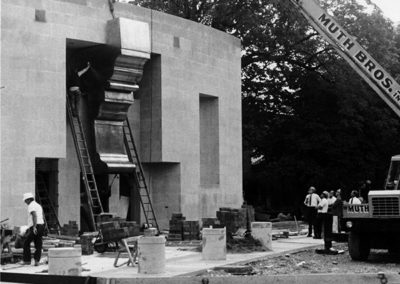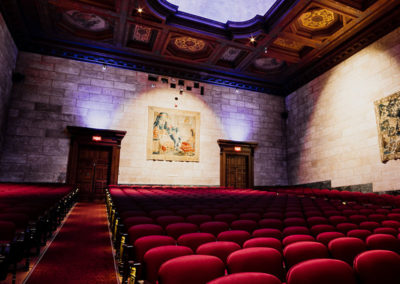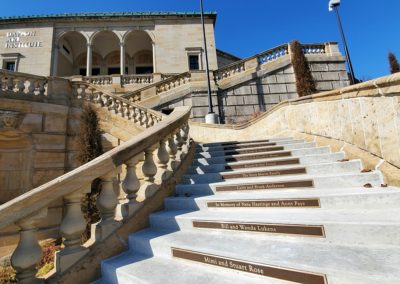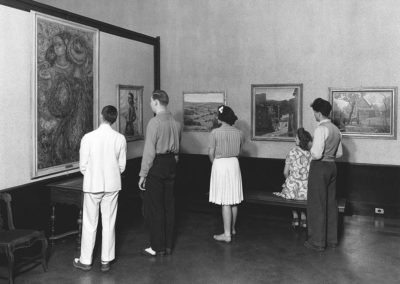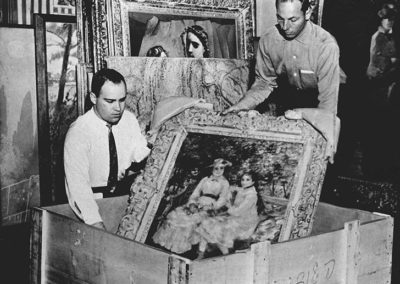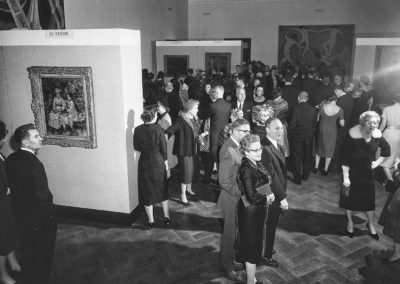Museum History
Today’s Dayton Art Institute began as the Dayton Museum of Arts; the official letter of incorporation was signed on February 28, 1919. The Dayton Museum of Arts was originally located at the corner of Monument Avenue and St. Clair Street in downtown Dayton. It was housed in the stately Kemper home, which was razed in 1945. The museum began as an art school with a small art collection. In 1927, the name was changed to the Dayton Art Institute to reflect the growing importance of the art school.
The new museum grew rapidly during its first decade, quickly outgrowing its original home in downtown Dayton. Through the generosity of benefactor Julia Shaw Patterson Carnell, who pledged $2 million, and many others in the community, construction of a new home, sitting atop a hill overlooking downtown Dayton, began in 1928. The beautiful museum building was designed by renowned museum architect Edward B. Green from Buffalo, New York.
As a young girl, Julia had the opportunity to travel the world. Her favorite place was Italy, and she so loved the architecture that the museum’s design was inspired by two Italian Renaissance palazzos: the Villa d’Este near Rome and the Villa Farnese at Caprarola. The new Dayton Art Institute soft opened to a select group of individuals on a cold and snowy day on January 7, 1930, and then to the public three days later on January 10. A gift from Julia to the community, she is quoted as saying “I feel as if I were giving you one of my children. Treat it kindly. I want this to be a friendly place. I want you to come again and again.”
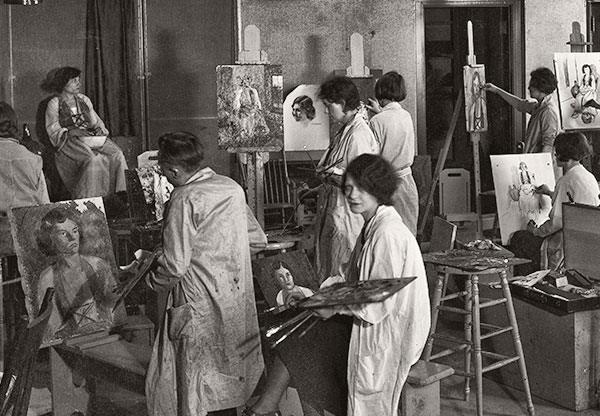
Want to learn more about the Dayton Art Institute’s history? Visit the museum and check out the interactive historical timeline in Gallery 222, created in partnership with Real Art for the museum’s centennial!
Museum guests were greeted with spacious galleries, a glorious Great Hall and two open-air cloisters. Thousands sought respite from the difficult economic times of the Great Depression at the museum, which not only offered lovely galleries, but also musical programs, classes, social events and even a collection of birds and animals that become known as “Weng’s Zoo,” named after Siegfried Weng, who served as museum director from 1929-1950. Julia Shaw Patterson Carnell had given the community a generous gift she would refer to as Dayton’s Living Room. Ninety years later, the building, now listed on the National Register of Historic Places, still houses the Dayton Art Institute.
In September 1994, the museum announced its largest ever capital campaign, the Renaissance Campaign, to fund a major renovation and expansion of the museum. The Dayton Art Institute reopened in June 1997 with more than 35,000 square feet of additional exhibition space and completely renovated permanent collection galleries. The renovations added the Entrance Rotunda and James F. Dicke Gallery of Contemporary Art, completing Julia’s original vision, and enclosed the Shaw Gothic Cloister, creating a new event space.
In the 21st century, ongoing renovations have replaced original gallery windows, restored the Grand Staircase, upgraded original restrooms, renovated the Mimi and Stuart Rose Auditorium, and made numerous other upgrades and improvements to help preserve the historic building for the next 100 years.
When the new museum building originally opened in 1930, there were approximately 200 objects in the collection. Over the course of 100 years, the collection has grown to more than 27,000 objects. The first registered object in the collection was the beautiful bronze sculpture fountain Joy of the Waters, by Harriet Whitney Frishmuth, a gift from Julia Shaw Patterson Carnell. The sculpture was originally located in the garden of the first museum location on Monument Avenue and moved to the Italian Cloister (now the Hale Cloister) of the new building. In honor of the Renaissance Campaign the work was conserved and moved to the Dicke Wing of American Art to protect it from the elements.
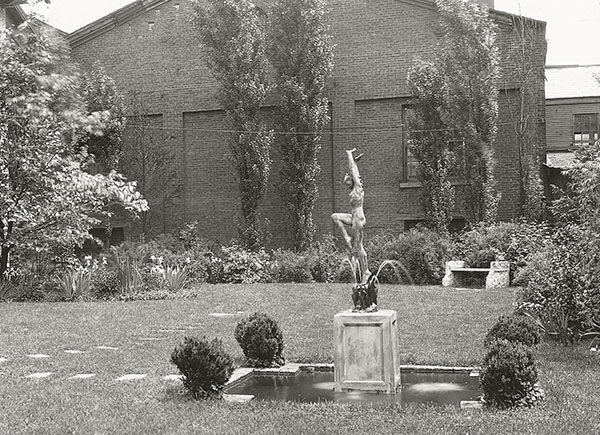
The museum’s encyclopedic collection has evolved to become recognized nationally and internationally as one of the finest collections in the Midwest, with areas of focus in African, American, Ancient Americas, Antiquities, Asian, Contemporary, European, Glass, Photography, Textiles and Works on Paper.
Today, the museum seeks to grow acquisition funds and is committed to collecting works that can add to its encyclopedic collection, especially those by underrepresented artists, particularly works by minorities and women.
The museum has also built a tradition for presenting and organizing outstanding special exhibitions. As early as 1960, the museum began organizing exceptional exhibitions such as the Chrysler Collection of French Paintings, which attracted 56,000 visitors.
During the 1990s, the museum organized special exhibitions such as Theme & Improvisation: Kandinsky & the American Avant-Garde, which received international acclaim, Edgar Degas: The Many Dimensions of a Master French Impressionist, which broke the existing attendance record, and Eternal China: Splendors from the First Dynasties, which drew visitors from all 50 states and more than 20 foreign countries.
In the 21st century, the museum has reaffirmed its tradition of providing outstanding educational programs and special exhibitions. Exhibition highlights have included: The Triumph of French Painting: Masterpieces from Ingres to Matisse; Form from Fire: Glass Sculpture by Dale Chihuly; and The Quest for Immortality: Treasures of Ancient Egypt. The latter included the largest selection of antiquities ever loaned by Egypt. In 2006, the museum hosted Diana, a Celebration, honoring the life and work of Diana, Princess of Wales. In 2011, The Dayton Art Institute organized the contemporary art exhibition Creating the New Century, which drew rave reviews from audiences and art critics. In late 2011 and early 2012, the museum hosted the exhibition American Chronicles: The Art of Norman Rockwell, which drew more than 45,000 visitors.
Recent exhibition highlights have included: Dayton Celebrates Glass: Chihuly, Littleton, Labino and Beyond; Into the Ether: Contemporary Light Artists; Ubuhle Women: Beadwork and the Art of Independence; Our Century: Dayton Area Collects; and Samurai, Ghosts and Lovers: Yoshitoshi’s Complete 100 Aspects of the Moon.
In 2019, the museum celebrated the centennial of its founding, with two community open house events and more than 100 Happenings for 100 Years. With innovative programming, increased use of technology and expanded services, the Dayton Art Institute continues to thrive as it enters its second century.
